This post may contain affiliate links. If you click through a link and make a purchase, I may receive a commission at no additional cost to you. As an Amazon Associate, I earn from qualifying purchases. Read the full disclosure here.
When you have osteoporosis, you’ve probably heard that low-impact strengthening exercises are essential to help build bone health.
Pilates exercise typically makes the list of low-impact strengthening exercises, but is Pilates safe for osteoporosis?
The truth is, it can be a little tricky to tease out which exercises to avoid. A traditional format Pilates class is not recommended for osteoporosis due to the number of exercises that violate spinal precautions for osteoporosis.
Today, I’ll explain which motions and exercises to avoid/modify when you have osteoporosis so you can keep your bones safe.
Disclaimer: This content is for educational purposes and is not medical advice. Read the full disclaimer.
What is Pilates?
Pilates is a mind-body exercise format that incorporates breathing with slow, coordinated, and intentful movements.
A regular Pilates practice can help develop muscle strength for the core and posture muscles, coordination, improve posture, flexibility, mobility, activities of daily living, and promote overall well-being.
Pilates was made famous by Joseph Pilates, who invented the method (previously known as Contrology) as a means to improve strength for the body and mind.
Pilates essentially crafted a first generation of the Reformer machine while in a WWI internment camp to help rehabilitate other soldiers.
There was also an original set of 34 mat exercises, performed in a specific order. This is a traditional format Pilates class, which is not recommended for low bone density due to the number of exercises that violate osteoporosis spinal precautions.
Today, Pilates is a popular exercise format that has branched into several different styles but retains the underlying principles of coordination and control.
Mat Pilates vs. Reformer Pilates
Mat Pilates is performed at gyms, studios, and can even be done at home, making it a very accessible form of exercise.
Exercises are done in various positions, including standing, sitting, prone, side-lying, and supine.
Small apparatuses such as light weights, the Pilates ring, mini ball, or gliders are commonly used during mat Pilates classes to add a different challenge or variation to exercises.
Mat Pilates is an excellent option for beginners to advanced participants due to the wide range of options and challenges.
Another Pilates format uses a large piece of equipment called the Reformer.
A reformer looks like a sliding platform hooked up to various pulleys and springs to add resistance to different exercises.
Though it may appear intimidating, the reformer can be used by beginners to advanced practitioners and can provide an additional challenge for advanced Pilates over mat Pilates.
The downside to reformer classes is that they tend to be very expensive and require equipment that you’ll need to visit a specialty studio and work with a qualified instructor.
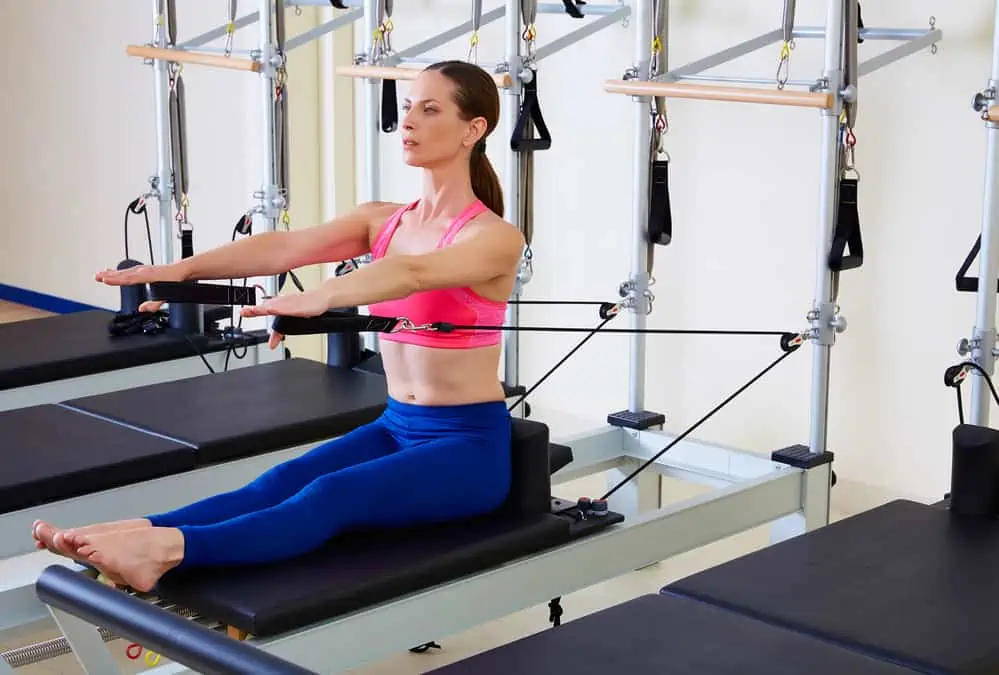
What is osteoporosis?
Osteoporosis (literally translated to porous bone) is a condition defined by low bone density.
This decreased density affects the structure of the bone and predisposes patients to low-impact fragility fractures (meaning, you can fracture a bone with minimal effort), such as when lifting, coughing, or sneezing.
According to the Bone Health & Osteoporosis Foundation (formerly the National Osteoporosis Foundation), approximately one in two women and up to one in four men age 50 and older will break a bone due to osteoporosis.
The most common areas of the body to experience osteoporosis fractures are the spine, hips, and wrists.
Promoting strength, weight-bearing exercise, and balance are encouraged in the treatment of osteoporosis to build strong bones.
Strengthening exercises help osteoporosis because contracting muscles places strain on the bones, stimulating bone growth (via cells called osteoblasts) and ultimately becoming more resistant to fractures.
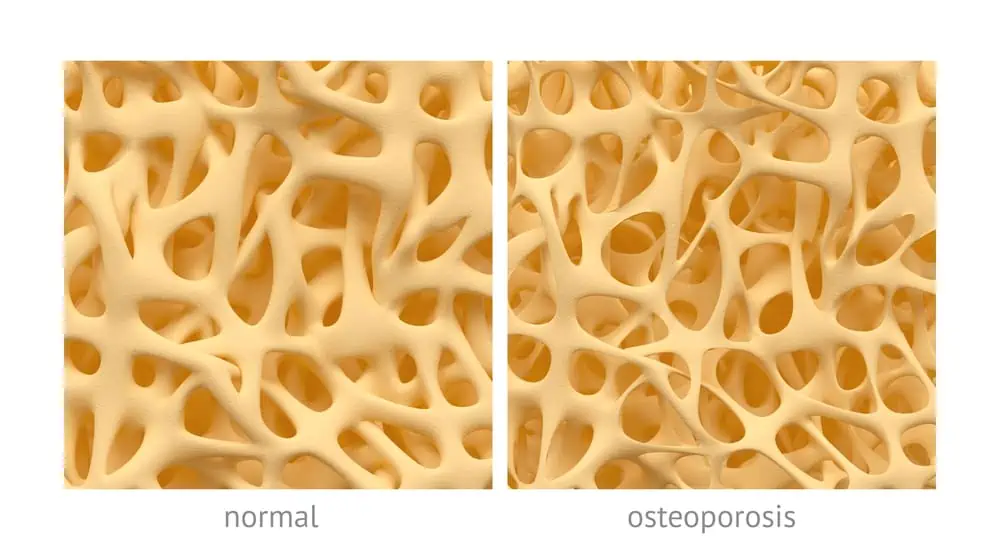
Osteoporosis vs. osteopenia
Osteopenia is defined as decreased bone density, but not as severe as osteoporosis.
It’s important to start strengthening exercises as early as possible to defend against these two conditions to prevent bone loss.
Pilates exercises to avoid when you have osteoporosis
Here’s what you need to know about Pilates and osteoporosis – not all exercises are safe, and not all instructors will know which exercises to avoid.
You can help protect yourself by understanding which movements might be dangerous and having substitutes ready to go. It’s always a good idea to let the instructor know if you have low bone density.
Many of the original Pilates exercises are not safe for osteoporosis due to favoring forward flexion or aggressive dynamic movements.
In general, avoid exercises that encourage significant spinal flexion, rolling on the back, flexion/rotation combined, extreme extension, or any exercise with a risk of falling.
Spinal flexion increases the pressure on intervertebral discs and the vertebral bodies, prone to compression fracture with osteoporosis.
In addition, caution with spinal flexion exercises for conditions such as lumbar disc herniation or sciatica as this position can worsen symptoms.
When possible, utilize hinging from the hips and lengthening the spine instead of flexing at the lumbar spine and thoracic spine.
The good news is that there are many ways to modify these movements so that you can still get a benefit and keep your bones safe.
More specifically, you’ll want to speak with your instructor to find safe alternatives/modifications to these common Pilates exercises:
*I’ve linked examples of these exercises in case you’re not familiar with the names, but again, these should be modified or avoided when there is osteoporosis risk.*
- Roll up
- Roll like a ball/open leg rocker
- The saw
- The rollover
- Corkscrew
- Seated spine twist
- Teaser
- Swan dive with rocking
- Seated forward fold/seated hamstring stretch
- Supine twist
For several supine exercises, make them osteoporosis-friendly by keeping the head on the mat and maintaining a more neutral spine position, reducing the risk of a spinal fracture.
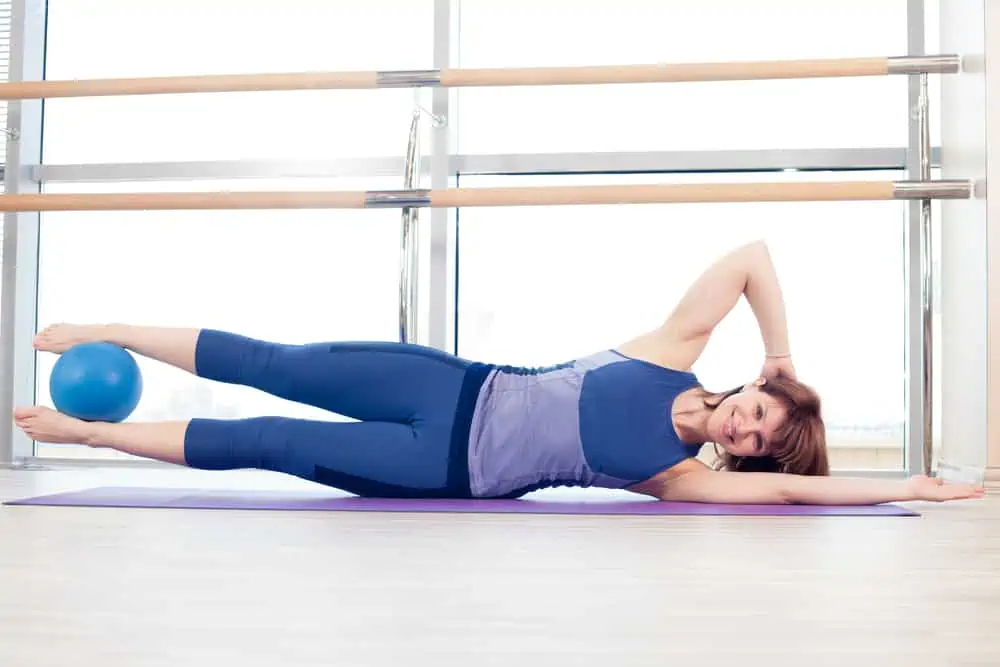
Safety tips for Pilates with osteoporosis
Educating yourself is one of the most critical aspects of prevention for osteoporosis fractures.
Here are some safety tips for osteoporosis to help you become your own advocate while incorporating Pilates into your routine.
These tips are also helpful for yoga and barre fitness programs as the general precautions will be the same.
- If you’ve been diagnosed with osteoporosis, speak with your doctor to decide if starting a Pilates exercise program is right for you. However, do keep in mind that not every doctor or physical therapist will understand the specifics of Pilates movements.
- Always let your instructor know about injuries or medical conditions ahead of time.
- Learn what a neutral spine feels like and aim to maintain a neutral spine and decrease flexion stress on the spine.
- Understand the difference between flexing at the hip and rounding the spine.
- Keep the head on the mat or support pillow for supine exercises such as the hundred, single leg stretch, and leg circles.
- Avoid extreme range of motion in any plane.
- Prioritize posture, breathing, and control over further range of motion.
- Avoid weights or props if it compromises your posture and spinal alignment.
- Use a mat with extra padding or double two yoga mats to prevent excessive pressure on the spine.
- Avoid unsupported supine positions if there is significant kyphosis curvature in the thoracic spine (upper back hump) – opt for leaning on the forearms or use pillows/bolsters to support the spine and avoid excessive pressure.
- Avoid falls and utilize a chair or ballet barre for additional support if you feel unsteady with standing exercises.
I also recommend checking out the book Exercise For Better Bones – A Complete Guide to Safe and Effective Exercises For Osteoporosis written by physical therapist Margaret Martin.
The book outlines safe exercises for people with osteoporosis of all fitness levels.

Is Pilates safe for osteoporosis?
Pilates is an accessible strengthening exercise format for all ages and levels that can be incorporated into the treatment of osteoporosis to improve muscle and bone strength, posture, fitness, and quality of life.
Traditional format Pilates classes are not recommended for low bone density due to the number of exercises that would compromise spinal precautions for osteoporosis.
Unfortunately, not all of the exercises are safe for osteoporosis, but by utilizing safe guidelines, you’ll be able to participate in this beneficial exercise safely. You can also seek out osteoporosis safe Pilates classes or private classes to learn some additional tips to keep yourself safe.
References:
Akkawi I, Zmerly H. Osteoporosis: Current Concepts. Joints. 2018;6(2):122-127. Published 2018 Jun 14. doi:10.1055/s-0038-1660790
Angın E, Erden Z, Can F. The effects of clinical pilates exercises on bone mineral density, physical performance, and quality of life of women with postmenopausal osteoporosis. J Back Musculoskelet Rehabil. 2015;28(4):849-58. doi: 10.3233/BMR-150604. PMID: 26406222.
Bone Health & Osteoporosis Foundation. Accessed from: https://www.bonehealthandosteoporosis.org/
Küçükçakır N, Altan L, Korkmaz N. Effects of Pilates exercises on pain, functional status and quality of life in women with postmenopausal osteoporosis. J Bodyw Mov Ther. 2013 Apr;17(2):204-11. doi: 10.1016/j.jbmt.2012.07.003. Epub 2012 Aug 9. PMID: 23561868.

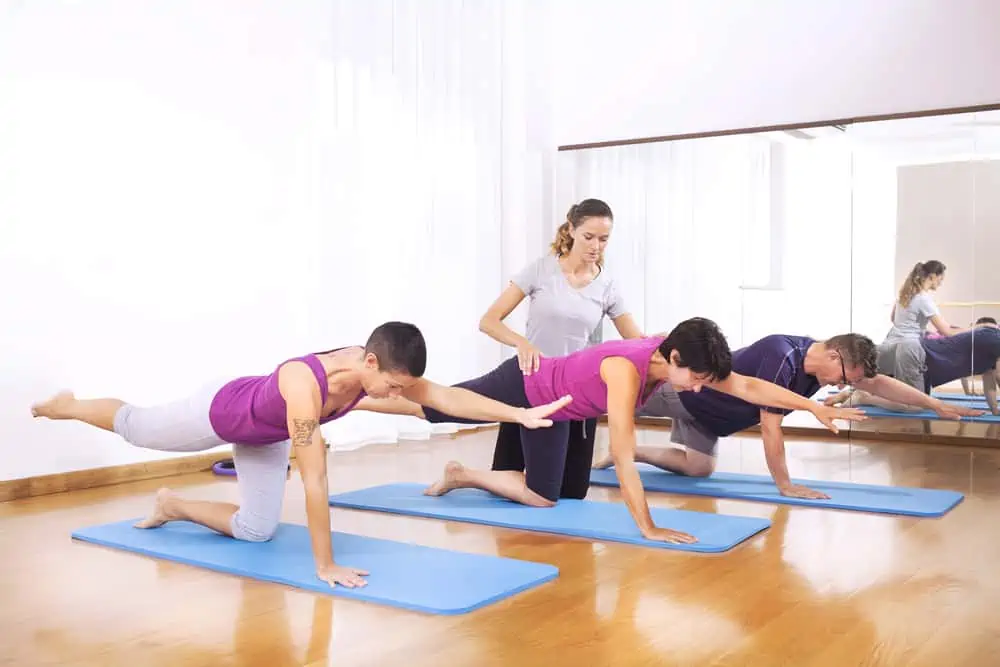
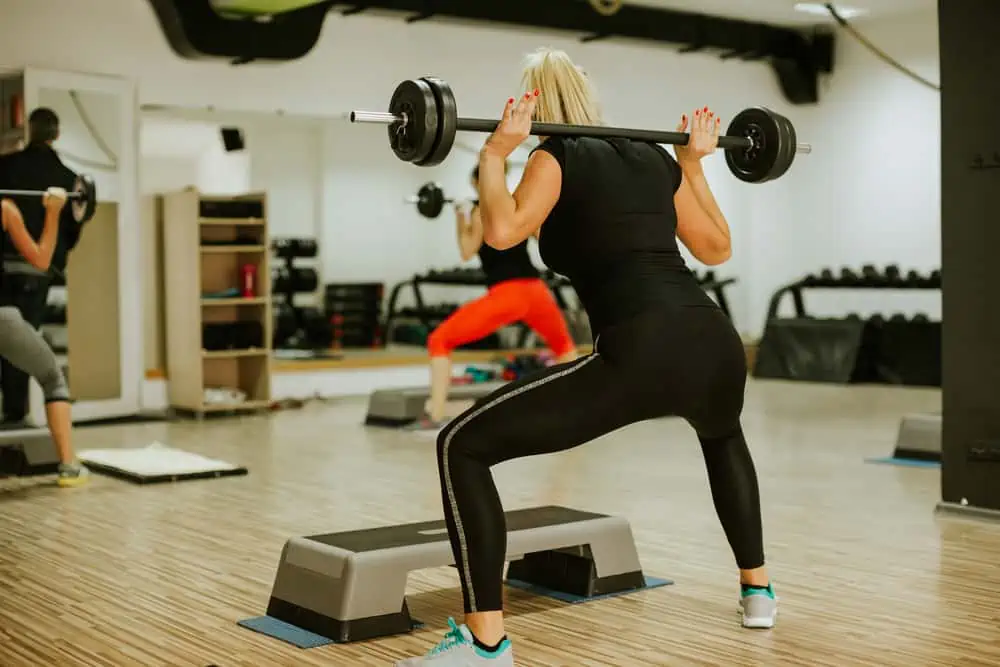

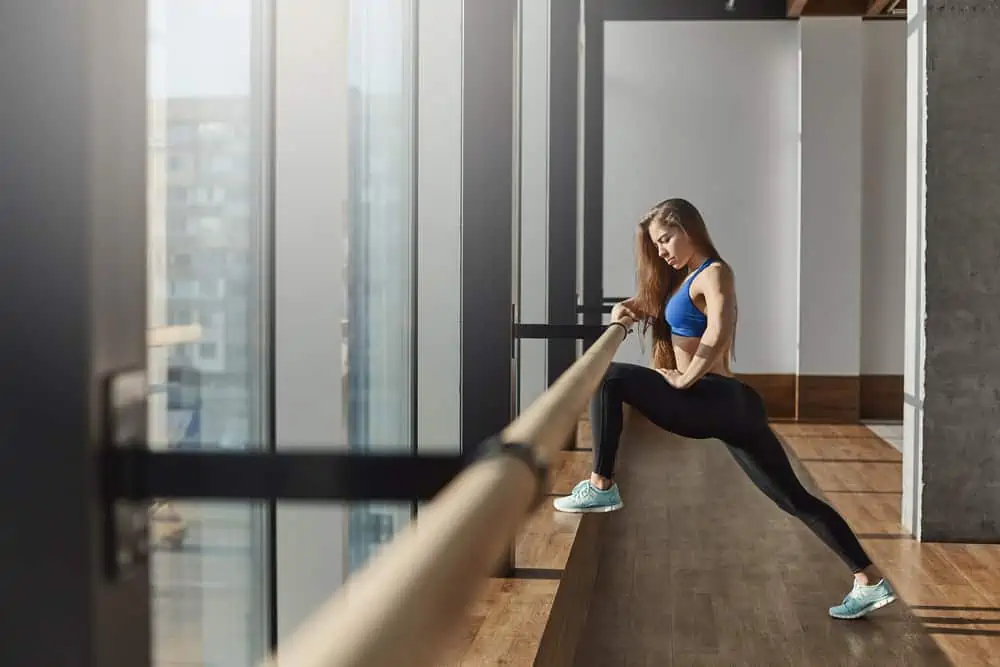
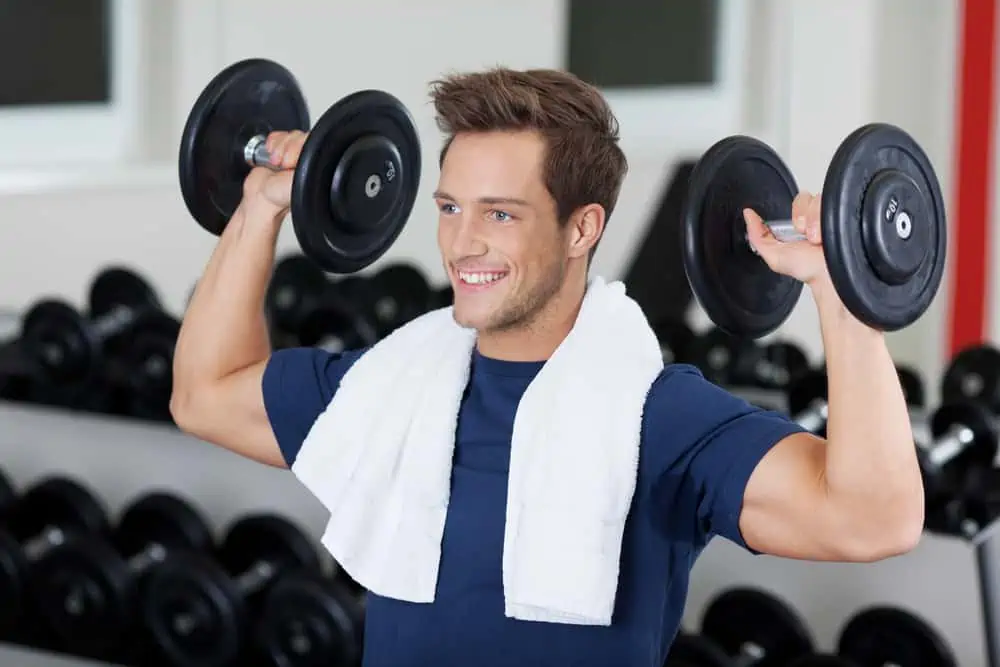
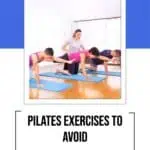
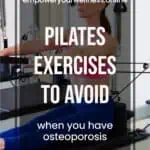
So important to find types of exercise that work for you personally. Great post! I’m such a fan of Pilates and sprinkle it into my exercise routine at least once a week. I think it’s made such a difference in my core! Love your focus and bringing attention to the value of safe movement! It’s so good for every aspect of our health, beyond just physical health 🙂
Thanks for reading and sharing your experience.